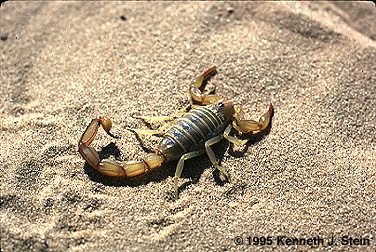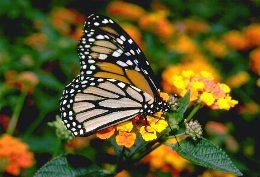|
|
|
This page explains the two ways that insects have diversified.
|
|
|
This page explains the two ways that insects have diversified.
You can find insects in every type of habitat imaginable, except for the middle of the ocean. You will find insects from the top of mountains to underground caves, deserts, rivers, fields and forests. They have even been in space on a satellite!
Insects are probably crawling through this room right now.
ONE
Insects have developed different ways of making a home for themselves. Some live together in groups, others live inside another insect and then eat their way out. Others make homes in plants, or built nests. Some of them dig holes in the ground.

TWO
Although they each have the same general body plan, different species of insects have developed changes in they way their body looks and functions, to adapt and survive in different environments.
Camouflage allows some insects to blend into surroundings. Certain butterflies, treehoppers, and caterpillars blend with their surroundings to hide from most predators. However, some predators, like praying mantids use camouflage for surprise attacks.
Other ways they protect themselves include:
* Hairs and spines-Many caterpillars, which are soft-bodied, have hairs and spines. Some sting, some stop other insects laying eggs inside them, others are just for show.
* Stingers-Wasps can sting repeatedly while honeybees only sting once. Stings are the result of being bothered or, with social insects, if a territory is in danger. Some wasps use their stingers to paralyze prey, then lay eggs and let their larva feed on the prey.
* Poison-Insects either feed on poisonous plants and gather the plant's poison (e. g. monarch gets its poison from milkweed) or can produce their own poisons (e. g. ladybug)

* Mimicry -It can be a good idea looking like another insect, if the other one is poisonous!